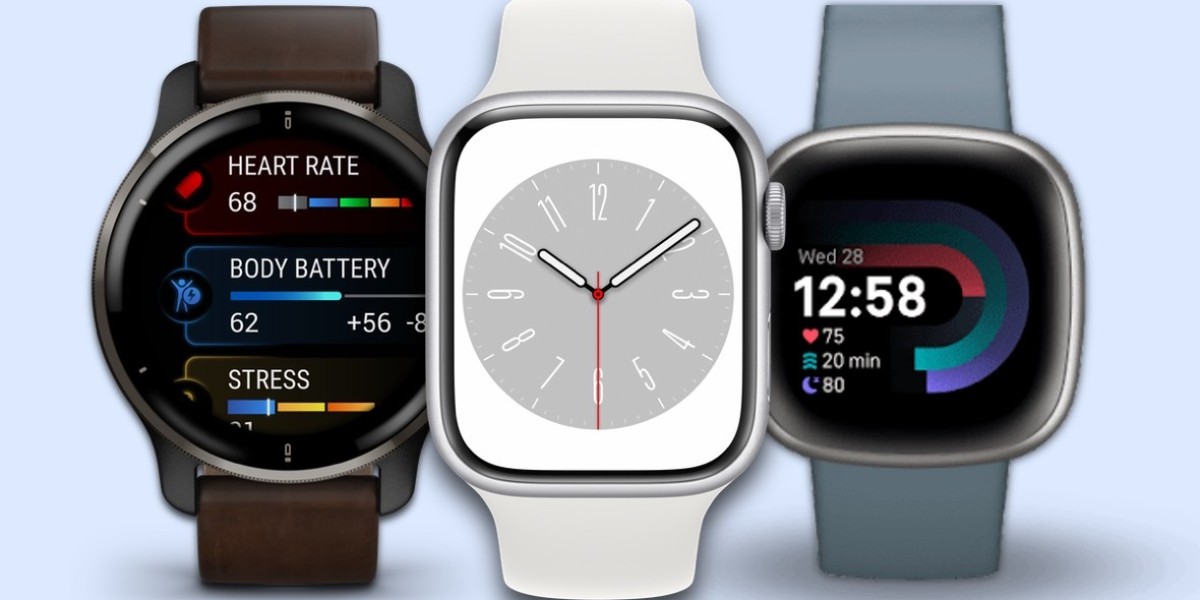Smart Watches have become integral to our modern lives, seamlessly blending technology with fashion and functionality. These wearable devices have come a long way since their inception. They have evolved from essential timekeeping tools to sophisticated gadgets that can track our health, keep us connected, and even make payments on the go. In this article, we'll journey through the fascinating history of smart watches, exploring their origins, milestones, and the exciting future ahead.
Early Beginnings of Wearable Technology
The concept of wearable technology dates back to the early 20th century when rudimentary devices like wristwatches were first introduced. However, in the late 20th century, wearable technology began to evolve beyond simple timekeeping. Companies like Seiko and Casio paved the way with innovative digital watches that offered features like calculators, calendars, and alarms, laying the foundation for the smartwatches we know today.
The Rise of Fitness Trackers
In the early 2000s, the fitness industry saw a surge in popularity with the introduction of wearable fitness trackers. These devices, often worn on the wrist like traditional watches, were designed to monitor physical activity, track steps, and measure vital signs like heart rate and calorie expenditure. Brands like Fitbit and Garmin led the way in this space, allowing consumers to monitor their health and fitness goals conveniently.
Smart Watches Enter the Market
The true era of smartwatches began in the mid-2000s with devices that combined traditional watch functionality with smartphone-like features. Companies like Pebble, Samsung, and Sony were among the first to market with their smartwatch offerings, which allowed users to receive notifications, access apps, and even make calls directly from their wrists. These early devices laid the groundwork for the explosion of their popularity in the years to come.
The Apple Watch Revolution
2015 marked a turning point in the smartwatch industry with the introduction of the Apple Watch. Leveraging the success of its iPhone lineup, Apple brought to the market a stylish wearable device that perfectly integrated with its ecosystem of apps and services. With each new iteration, the Apple Watch continues redefining a smartwatch's capabilities, firmly establishing Apple as a dominant player in the wearable technology space.
Android Wear and Wear OS
Not to be outdone, Google entered the smartwatch arena with its Android Wear platform, later rebranded as Wear OS. Designed to work with various smartwatch manufacturers, Wear OS offers users a customisable and feature-rich experience with access to Google services like Google Assistant, Google Maps, and Google Fit. While Wear OS devices have faced stiff competition from the Apple Watch, they continue to evolve with new features and improvements to capture a larger market share.
The Expansion of Smart Watch Features
As smartwatches have grown in popularity, so too have their capabilities. Today's smart watches offer many features beyond essential timekeeping and notifications. Advanced health monitoring functionalities such as ECG, blood oxygen monitoring, and sleep tracking have become standard on many devices, providing users with valuable insights into their overall well-being. Additionally, smartwatches now boast integration with smart home devices, contactless payment capabilities, and navigation tools, making them indispensable companions for everyday life.
Fashion and Style in Smart Watches
There has been a growing emphasis on design and aesthetics in smartwatch development in recent years. Tech companies have partnered with fashion brands to create stylish and customisable wearable devices that appeal to a broader audience. From luxury brands like TAG Heuer and Louis Vuitton to fashion-forward companies like Fossil and Michael Kors, smartwatches have become a fashion statement as much as a functional gadget. Users can personalise their smartwatches with customisable watch faces and interchangeable bands to suit their individual style preferences.
The Future of Smart Watches
As we gaze into the future, the smartwatch industry promises a plethora of exciting advancements. With technology rapidly progressing, we can anticipate smartwatches becoming even more integral to our daily lives, thanks to health monitoring, battery longevity, and connectivity improvements. The integration with emerging technologies like augmented reality and artificial intelligence will redefine our interaction with smartwatches, opening up a world of possibilities.
Wrapping Up
The evolution of smartwatches has been nothing short of remarkable. From humble beginnings as essential timekeeping devices to sophisticated gadgets that can track our health, keep us connected, and enhance our daily lives in countless ways, smartwatches have come a long way in a relatively short time. As we look to the future, the possibilities for smartwatch technology are endless, and it's exciting to imagine how these devices will continue to evolve and shape how we live, work, and play.








